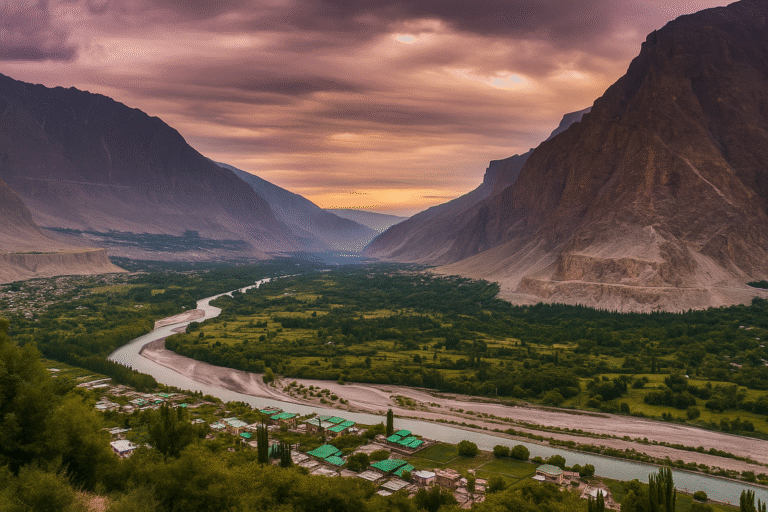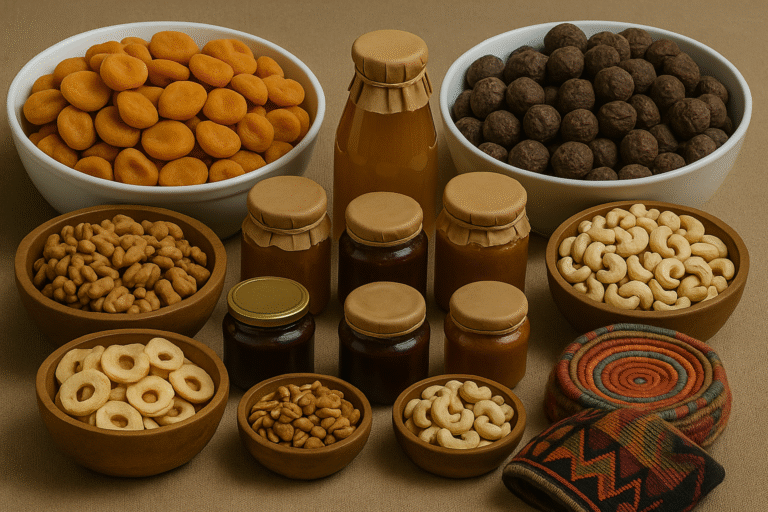
Unlock Paradise Exploring Hunza Valley
Travel Safety Tips for Hunza Valley
Visiting Hunza Valley is a dream for many, but ensuring your safety is essential for a smooth and enjoyable trip. Here are some travel safety tips to keep in mind:
- Weather Awareness: Check the weather forecast before your trip. Mountainous areas like Hunza can have sudden weather changes, so pack clothing for all possible conditions.
- Road Safety: The roads leading to Hunza Valley can be narrow and winding. Hire an experienced driver or use reputable transportation services to ensure safe travel.
- Health Precautions: Carry a basic first aid kit and any personal medications. High altitudes can affect some travelers, so stay hydrated and give yourself time to acclimate.
- Local Guidance: Consult local guides for trekking or exploring remote regions. They are familiar with the terrain and can provide valuable safety advice.
- Communication: Inform your family or friends about your travel plans, especially if venturing into less-connected areas. Mobile networks may be limited in certain parts of the valley.
- Respect the Environment: Be mindful of your surroundings, follow marked trails, and avoid activities that may harm the natural beauty of the valley.
By following these safety tips, you can fully immerse yourself in the breathtaking landscapes and culture of Hunza Valley while ensuring a safe and memorable trip.
Nestled in the heart of the Karakoram mountains, Hunza Valley is a breathtaking gem renowned for its majestic landscapes and serene ambiance. With snow-capped peaks, azure rivers, and lush green terraces, this paradise on earth is a haven for adventurers and nature lovers alike.
Discover the Wonders of Hunza Valley
Nestled in the majestic Gilgit-Baltistan region of Pakistan, Hunza Valley is nothing short of paradise on Earth. Famous for its dramatic landscapes, unique culture, and warm hospitality, this destination has become a bucket-list spot for travelers worldwide. This guide will introduce you to the history, culture, and attractions of the valley, along with tips for planning your visit.
Whether you’re an adventure lover, a culture enthusiast, or simply seeking a serene retreat, Hunza Valley welcomes all.
Table of Contents
Geography and History
Where is Hunza Valley
Hunza Valley is located in northern Pakistan, within the Karakoram mountain range. It boasts spectacular scenery, from towering snow-capped peaks to lush green meadows and turquoise lakes. The valley stretches along the historic Silk Road, making it a critical trading hub through history.
A Glimpse Into Hunza's Past
Hunza Valley was traditionally ruled by the Mirs of Hunza, with its strategic position earning it significant geopolitical importance. The ancient forts, Baltit and Altit, stand as proud symbols of the valley’s rich heritage.
Fun Fact: Hunza’s people are known for their remarkable longevity and healthy lifestyles, earning the valley the nickname “Shangri-La.
Explore the Vibrant Hunza Culture
The People of Hunza Valley
The residents of Hunza, primarily Burusho and Wakhi, are known for their friendly demeanor and incredible health. The valley’s diet, rich in apricots and organic whole foods, contributes to their exceptional life expectancy.
Traditions and Celebrations
Hunza’s music, dance, and vibrant festivals reflect the valley’s unique culture. Don’t miss the spring blossom festivities or traditional Hunza dances during your visit.
Tip for Travelers: Respect local customs and dress modestly to blend in and show appreciation for the culture.

Must-Visit Attractions in Hunza Valley
Hunza Valley offers countless picturesque and culturally rich sites. Here’s a roundup of its top attractions:
1. Attabad Lake
Formed after a massive landslide in 2010, this turquoise lake is surrounded by rugged mountains and provides the perfect backdrop for boating and kayaking.
2. Baltit Fort
This 700-year-old fort is a UNESCO World Heritage site. It provides insights into the valley’s past rulers and offers mesmerizing views of the surrounding mountains.
3. Altit Fort
Restored with the help of the Aga Khan Trust for Culture, Altit Fort is older than Baltit and overlooks a stunning royal garden.
4. Passu Cones
An iconic natural wonder, these jagged peaks are a photographer’s dream. Be sure to stop at nearby Passu Glacier for breathtaking views.
5. Hopper Valley
This destination offers panoramic views of glaciers and is an ideal spot for adventure seekers.
6. Karimabad
The heart of Hunza Valley, Karimabad is known for its bustling bazaar, local handicrafts, and access to both Baltit and Altit forts.
Pro Tip: Hire a local guide for detailed insights into the history and legends of these sites.
Best Seasons to Explore Hunza Valley
Why Spring and Autumn Are Ideal
- Spring brings cherry blossom season, painting the valley in hues of white and pink.
- Autumn decks Hunza in vibrant shades of gold, orange, and red, offering stunning mountain views.
Summer is great for trekking, while winter provides serene, snow-covered landscapes.
Remember to plan your visit based on your preferred activities and the valley’s climate during the time of year.
Weather and Travel Tips
Hunza Valley experiences extreme weather variations. Here’s what you need to know:
Climate Overview
- Spring (March-May): Pleasant weather with blooming flowers.
- Summer (June-August): Warm days, ideal for trekking.
- Autumn (September-November): Crisp air and stunning fall foliage.
- Winter (December-February): Snow blankets the valley, creating a magical ambiance.
Travelers should dress in layers and carry appropriate gear for the season they plan to visit.

Culinary Delights of Hunza Valley
Hunza’s local cuisine focuses on fresh, organic ingredients. Some must-try dishes include:
- Chapshuro: A meat-filled pastry.
- Diram Phitti: A sweet bread made from apricot oil.
- Harissa: A porridge-like dish consisting of wheat and meat.
Don’t forget to try their famous apricot oils and dried fruits for a healthy and delicious treat!
Bonus Tip: Pair your meal with Hunza’s green tea for a perfect end to your day.

Shop Local Hunza Products
Support the valley’s communities by buying local, sustainable products. Popular items include:
- Dried fruits like apricots and walnuts.
- Handmade woolen shawls and rugs.
- Beauty products made from apricot kernels, a secret to Hunza women’s glowing skin.
Remember to bargain politely; it’s a cultural norm here.
How to Reach Hunza Valley
From Islamabad
- By Road: Take the scenic Karakoram Highway, which takes about 14–16 hours. OR You Can Book Car on Rent?
- By Air: Fly to Gilgit, then travel by road for about 2–3 hours.
From Lahore
Same as above, but longer road travel to Islamabad first.
From Gilgit
Taxis and local vans are readily available for the two-hour drive to Hunza.
Important Tip: Book your transportation and accommodations in advance to avoid last-minute hassle.
Addressing Common Tourist Concerns
Pain Points
- Difficulty finding reliable hotel information.
- Overpriced accommodations.
- Language barriers.
- Lack of knowledge about ideal travel times for families or couples.
Our Solutions
- Verified Hotel Listings: Save time by using our trustworthy platform to book Hunza Valley hotels.
- Affordable Rates: Transparent pricing guaranteed to suit every budget.
- 24/7 WhatsApp Support: Help is always just a message away.
- Local Guidance: We provide expert insights to make your trip seamless.
Travel Sustainably in Hunza Valley
We encourage tourists to:
- Respect local customs and traditions.
- Support small businesses and shop locally.
- Refrain from using plastic to preserve the valley’s pristine environment.
Together, we can ensure Hunza Valley remains a paradise for future generations.

FAQs About Hunza Valley
What is the best time to visit Hunza Valley?
Spring (March-May) and Autumn (September-November) for the best weather and scenic beauty.
How do I get to Hunza Valley from Islamabad?
Take the Karakoram Highway by road or fly to Gilgit and opt for a shorter road trip.
Are there reliable hotels in Hunza Valley?
Yes, book through our verified listings for trusted accommodations.
What is Hunza Valley famous for?
Its breathtaking landscapes, rich culture, and the long life expectancy of its residents.
What are some must-visit attractions in Hunza Valley?
Attabad Lake, Baltit Fort, Passu Cones, and Altit Fort are unmissable.
Can I book a hotel through you?
Yes, you can! Call us or contact us on WhatsApp, and we will book a hotel for you in no time.
Book your stay in Hunza Valley with us today and enjoy tailored support to make your trip unforgettable.
We hope you found this blog helpful and informative in planning your trip to Hunza Valley. Your feedback is valuable to us, so please let us know if this guide answered your questions or if there’s anything else you’d like to learn about.




